Why Indonesia
The world's largest archipelago country, with more than 17,000 islands
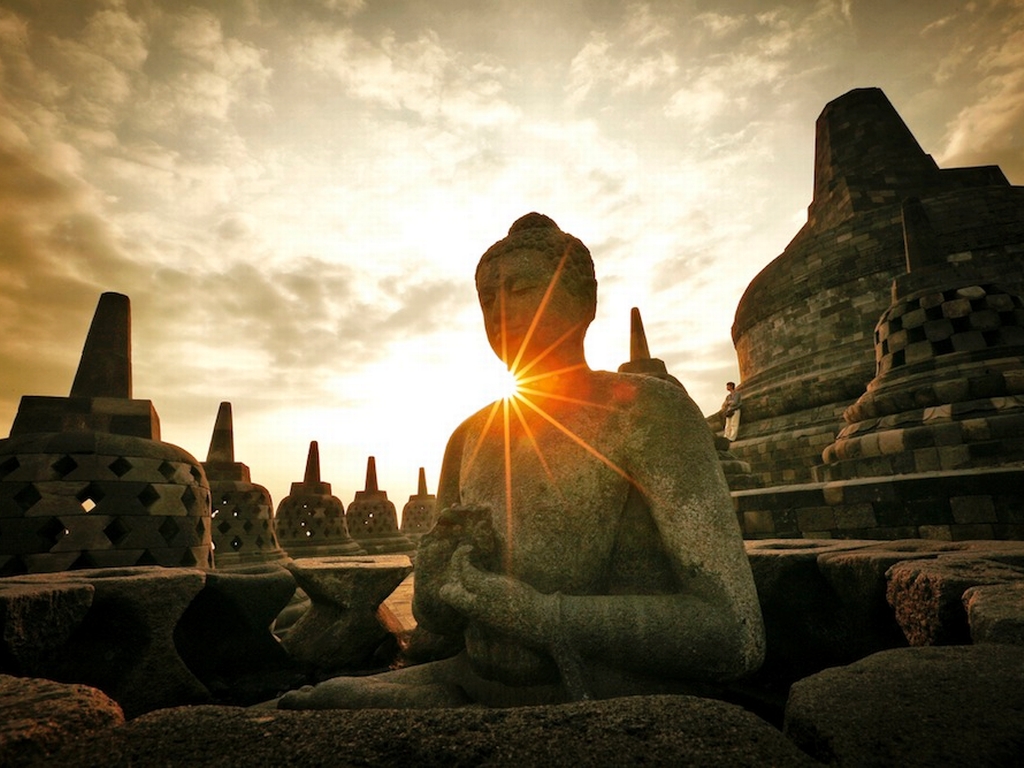

INDONESIA
Home to over 17,000 islands, hundreds of languages, diverse landscapes, a kaleidoscope of cultures and the world’s largest Muslim population, Indonesia is a land of superlatives and wondrous variety.
Bhinneka Tunggal Ika – Indonesia’s motto – means ‘united in diversity’, and this perhaps best sums up this vast and varied land of treasures; from mountains to beaches, to jungle and metropolis; from traditional cultures to modern comforts, Indonesia has it all.



INDONESIA
Home to over 17,000 islands, hundreds of languages, diverse landscapes, a kaleidoscope of cultures and the world’s largest Muslim population, Indonesia is a land of superlatives and wondrous variety.
Bhinneka Tunggal Ika – Indonesia’s motto – means ‘united in diversity’, and this perhaps best sums up this vast and varied land of treasures; from mountains to beaches, to jungle and metropolis; from traditional cultures to modern comforts, Indonesia has it all.

Beaches
Picture white sandy vistas fringed by coconut trees, endless emerald ocean views, skies on fire at sunset and hammocks swaying gently on the tropical breeze. Indonesia boasts some of the world’s best beaches. Such an array of islands means you’re never far from the coast, so getting there is easy; it’s the going home that you’ll find difficult, with so many superb dive sites, surf spots, water sports and seaside resorts to choose from, Indonesia is a beach comber’s nirvana. Pick your favourite cocktail, then just sit back and enjoy.
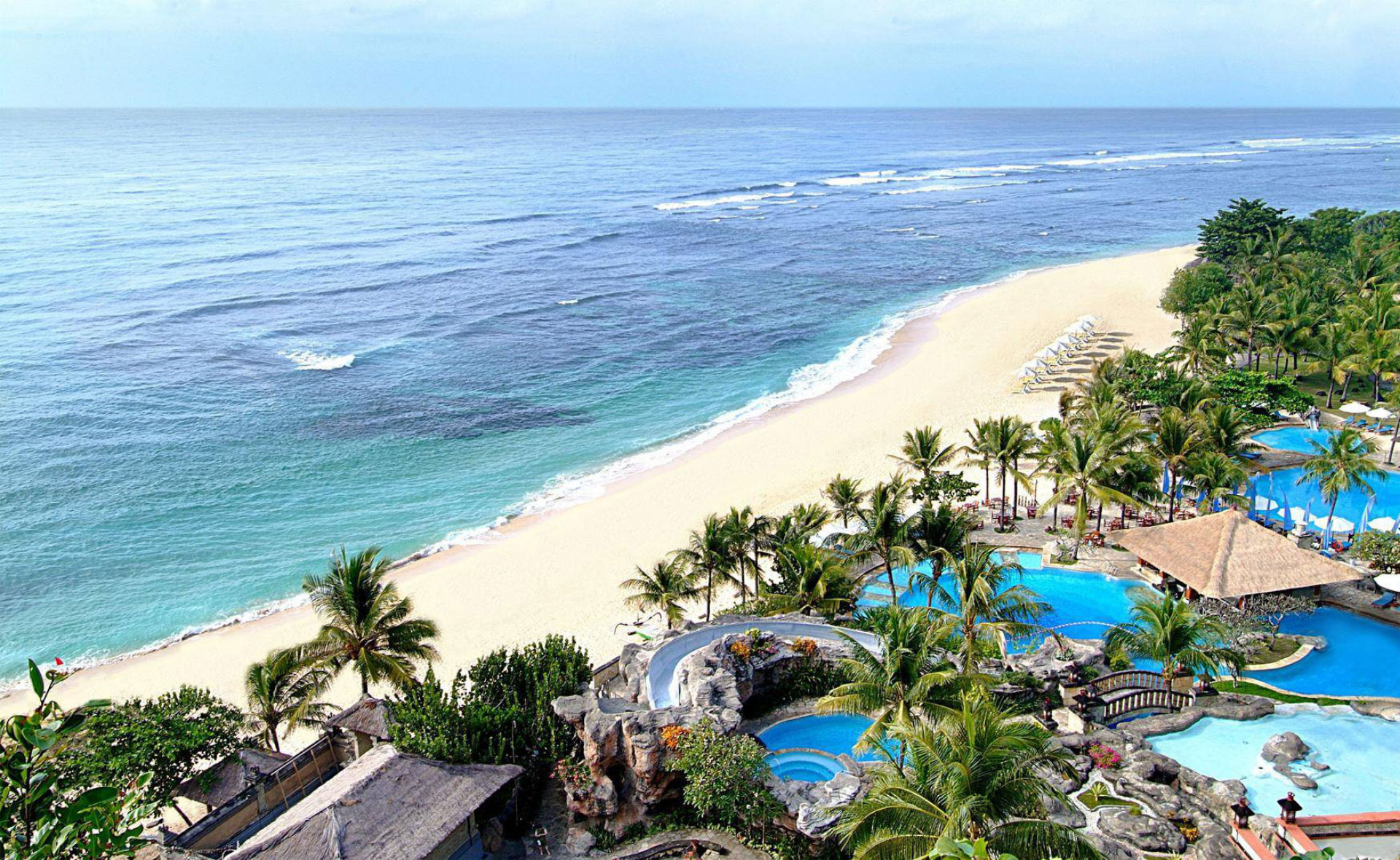
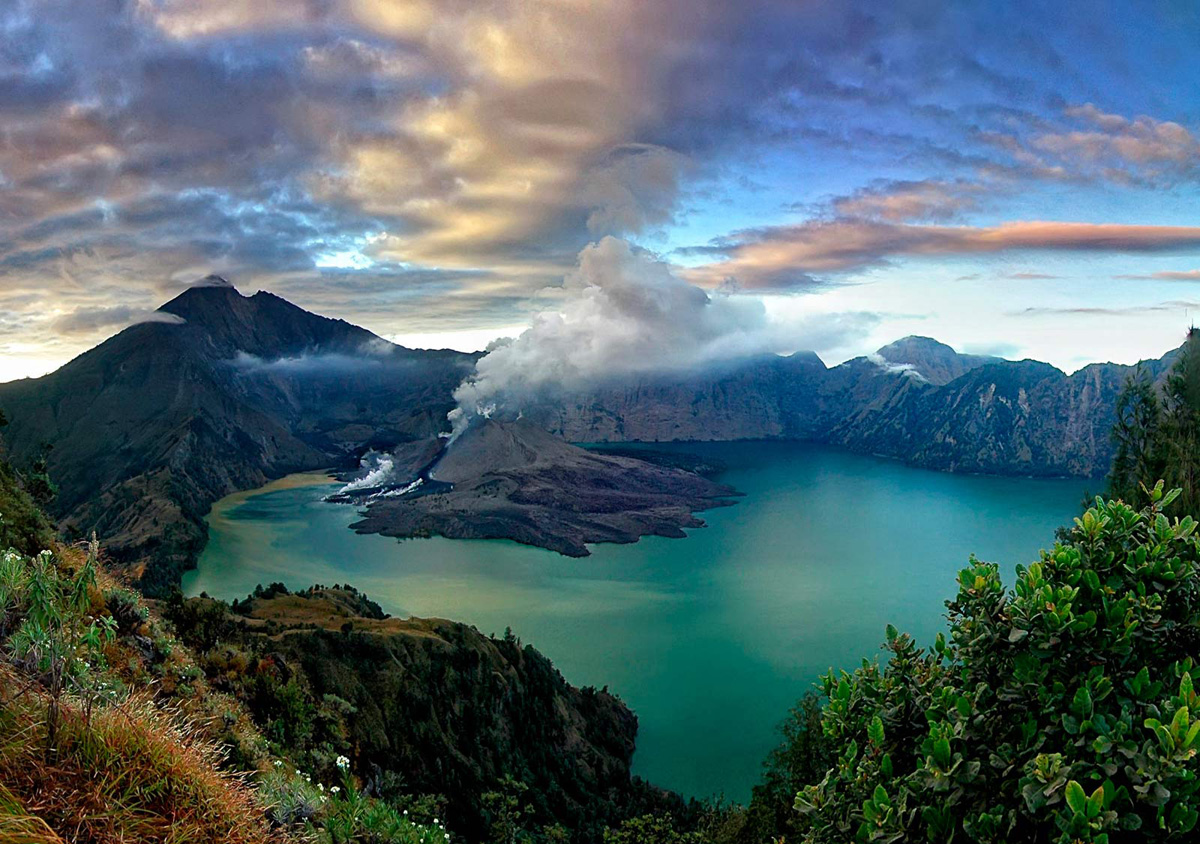
Ring of Fire
Indonesia is a jagged spine of volcanic islands, built into dramatic conical spires by centuries of eruptions and tectonic shifts. The archipelago splits the Indian and Pacific oceans from Thailand in the west, down through the equator and all the way over to Australia and Papua New Guinea in the east. The rich, volcanic soil of the land and the minerals of submarine eruptions make for a superbly fertile environment, giving birth to a tropical explosion of life. Bays, lagoons and coral reefs freckle these emerald oceans with patches of lush vegetation, rocky jungle peaks rising up from the depths and cresting a wave.
Indonesia’s explosive ancestors continue to stand tall and proud – virtually every island has at least one volcano as its centerpiece - some of these rumbling giants remain active to this day. See the sulfur farmers haul their heavy loads up the slopes of Kawah Ijen, hike up to the heavens on Rinjani in Lombok or marvel at the bizarre lake within a crater within a lake within a crater - the miraculous Russian doll of volcanoes to be found only in Indonesia. Mount Bromo is a special sight for travellers; a black molten moonscape in the middle of the Javan jungle, rising up through a silken halo of morning mist; the best way to approach it is still on horseback at dawn. A truly primeval experience.
Underwater Wonderland
Under the waves, lie shipwrecks, shimmering shoals of ocean life, reefs and labyrinths of coral caves. The biodiversity of Indonesia’s oceans is simply beyond compare. All over the archipelago, you can dive, swim and snorkel into an infinity of blue and discover something new with every adventure into the depths. Highlights include turtle conservation in the Derawan islands off North East Kalimantan, whale sharks in the Flores straight, migrating manta rays off the coast of Bali, plus dolphin, dugongs and a congregation of otherworldly beauty in the myriad sapphire coves of Raja Ampat in West Papua. For those with a love of the sea and all its treasures, Indonesia is a living library; a glittering procession of ocean wonders that will leave you speechless.

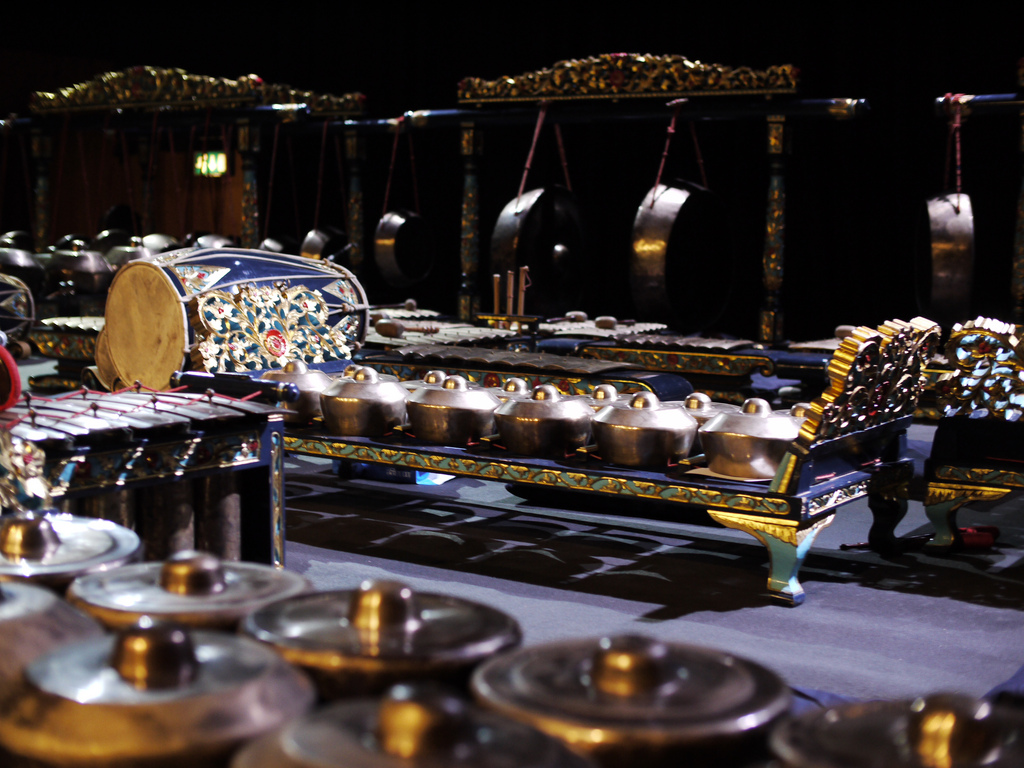
Traditional Cultures
Indonesia is bursting with artistic traditions, carrying age-old customs through the generations and onto the modern stage. Check out a Wayung puppet show for a timeless story of Javanese mythology, or see the care, flair and craft that goes into a Batak wedding ceremony. Listen to the exquisite and complex symphony of a gamelan orchestra in full flow, or try your hand at Panjat Pinang, when villagers pile themselves up as high as a house to climb a greasy pole for prizes. Only in Indonesia.
Indonesia only became a unified republic in 1945. Before that, the many isolated islands’ only common thread was their value as gardens and storehouses for colonial wealth in the Dutch East Indies. This meant the cultures and idiosyncrasies of these vast and disparate lands have been allowed to remain independent and intact until the modern day. Visitors can still see tribes living as they have done for centuries. From Dayaks in the jungles of Kalimantan, to Barong spirit dances in Balinese temples, pygmy forest dwellers of Papua and traditional animist funeral rights in Toraja; Indonesia remains a rich and startling glimpse into the wonders of the ancient spirit world.
Wonders of the Ancient World
Peppering this chain of paradise islands are ruins, monuments and shrines, evocative and epic reminders of civilizations passed. Borobudur is the word’s largest Buddhist monument – a towering pyramid of stupas, statues and intricate stone sculptures. Nearby Prambanan stands as a testament to a lover’s devotion to his queen, whilst the many palaces, relics and gateways of ancient Java stand as stoic echoes from a bygone civilization.
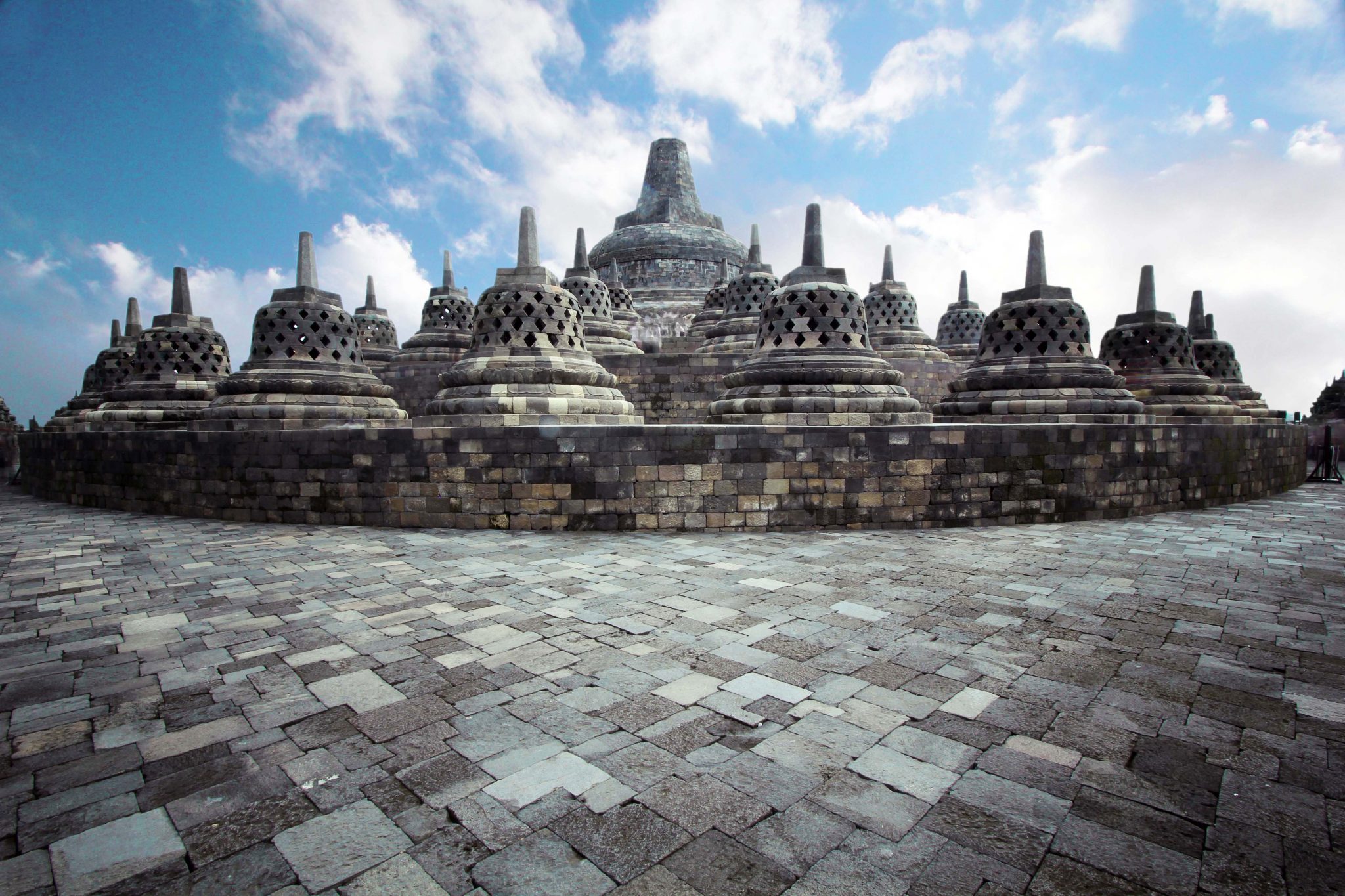
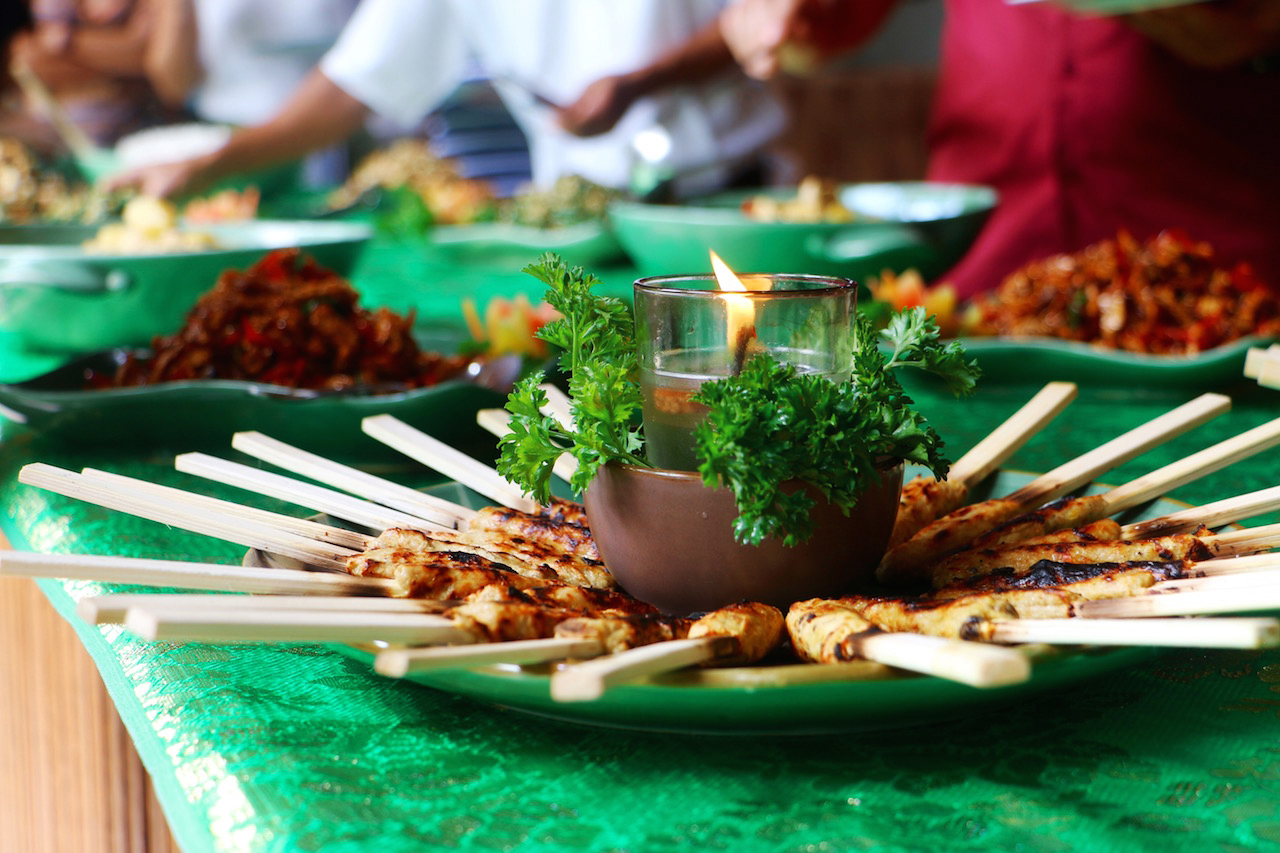
Colorful Cuisine
Indonesia’s food is as varied as the nation itself. Street sellers known as ‘kaki lima’ cook up a storm on the streets, wafting out wondrous flavours into the night sky and beckoning in a congregation of hungry passers by. Gado-gado is so good they named it twice; spicy peanut sauce with crunchy fresh beansprouts – a veggie street special that always hits the spot. Kitchens throughout the archipelago are represented by culinary treats, such as Baso Malang, Soto Betawi, and Bubur Manado to name but a few.
With a stocked ocean larder on the doorstep, seafood is something of a specialty here. Fish of all shapes and sizes clamour with crustaceans onto dinner plates, bursting with an array of spices, herbs and tangy sauce, enveloped in the delicately smoky flavor of coconut and bamboo from a beach barbeque.
Fancy something unusual? Indonesia always has a surprise up its sleeve, and with food it has a flair for the genuinely unique. Durian is Indonesia’s Marmite. A spiky fruit with an explosion on flavours hidden beneath its prickly tendrils, you either love it, or simply want to throw it out of the window and run. Banned on public transport and prone to fermenting into a drunken goo if left in a fridge, this extraordinary fruit divides opinion and defies definition. Its taste has been described as a mixture of aromatic, bitter, sweet and savory all rolled into one, combining creamy custard undertones with a butter-like consistency and hints of garlic. Its smell has also been likened to an open sewer mingling with a gas leek in an abattoir. Not for the feint of stomach, but an absolute must for adventurous culinary globetrotters. Are you a lover or a hater of this controversial fruit? You’ll never know until you try!
High on the culinary bucket list should be Nasi Padang – a style of cooking haling from its namesake hometown in West Sumatra, blending delicious meats, seafood, vegetables and spices marinated in sumptuous sauces of coconut, chili and herbs; this ubiquitous cookery is so popular, it’s spread to virtually every corner of the nation. Try the Sapi Rendang and you may decide to stay forever. With so many tastes on the table, you’ll need to come back to Indonesia again for second helpings.
Batik
Batik is the distinctive, intricately patterned fabric that ties so many of Indonesia’s cultures together. You’ll see it everywhere in the archipelago, from the spinning wheels of hill tribe huts, to the markets of Jogja and the catwalks of Jakarta; each island tribe has its own style. Each garment is different, but all are unmistakably Indonesia. Visitors can learn to make their own designs using age-old traditional methods, or can simply peruse and admire the constellation of colours and pick their faves from the firmament.
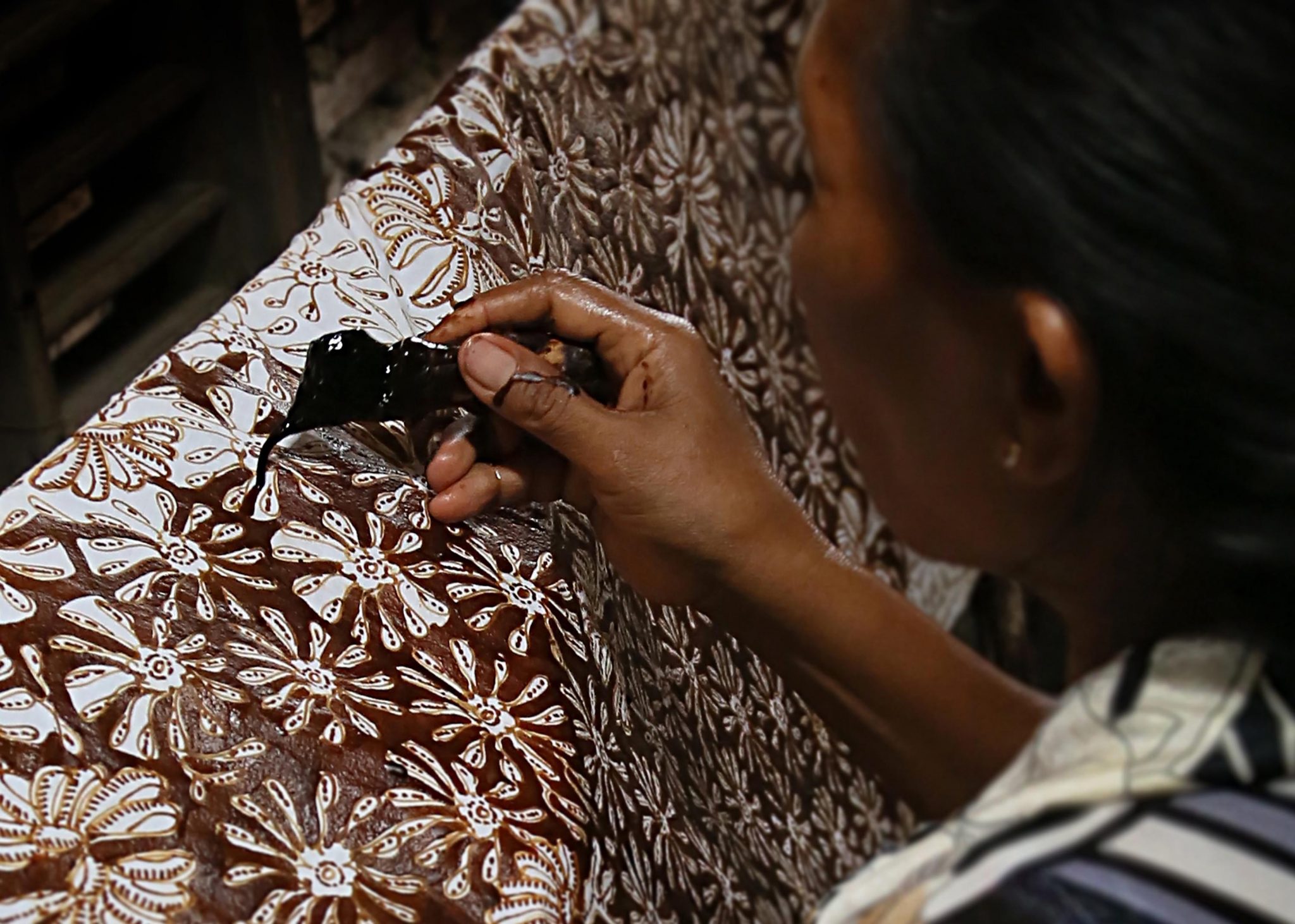
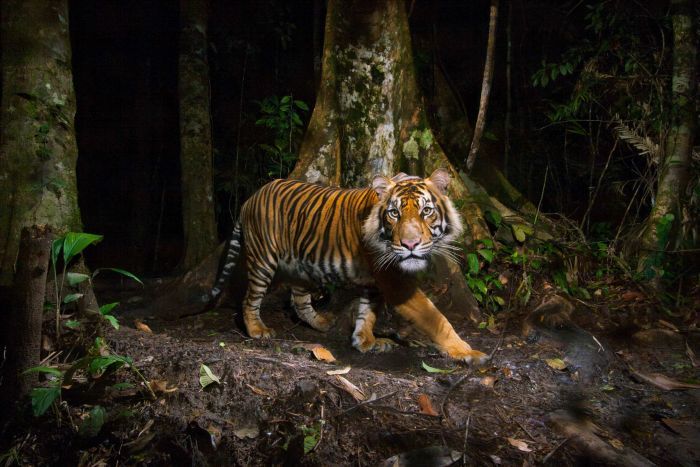
Wildlife of the Wallace Line
In the 19th century, an English entomologist, botanist and traveller named Alfred Russell Wallace spent a decade collecting, cataloguing and marveling at the flora and fauna of what was then the Malay Archipelago. He discovered a land that is uncommonly rich in biodiversity, and also noticed a distinct line through the tropics which separates Asian and Australian ecology. That borderline is known to this day as The Wallace Line. Most of the treasures he uncovered are still around today, waiting to be rediscovered by modern travellers. Indonesia is home to orangutan, komodo dragons, birds of paradise, the Sumatran tiger and the Javanese Rhino. And that’s just on the land. Venturing out into the open oceans opens up a whole universe of dazzling corals and a uniquely varied proliferation of marine life. For nature lovers, there’s nowhere that packs as much beauty and biodiversity as Indonesia.
Stunning Cityscapes
If the concrete jungle is more to your tastes, Indonesia boasts some bustling metropolises that embody the vibrant and electric pulse of a nation on the move. You can rub shoulders with international DJs in the many bars and clubs of Jakarta, where a pulsating nightlife will swallow you whole, or mingle with artisans and designers in the boutiques and workshops of Yogyakarta. Development has come to Indonesia, and it’s brought with it a superb range of shopping, dining and nightlife to rival any major city in the world.
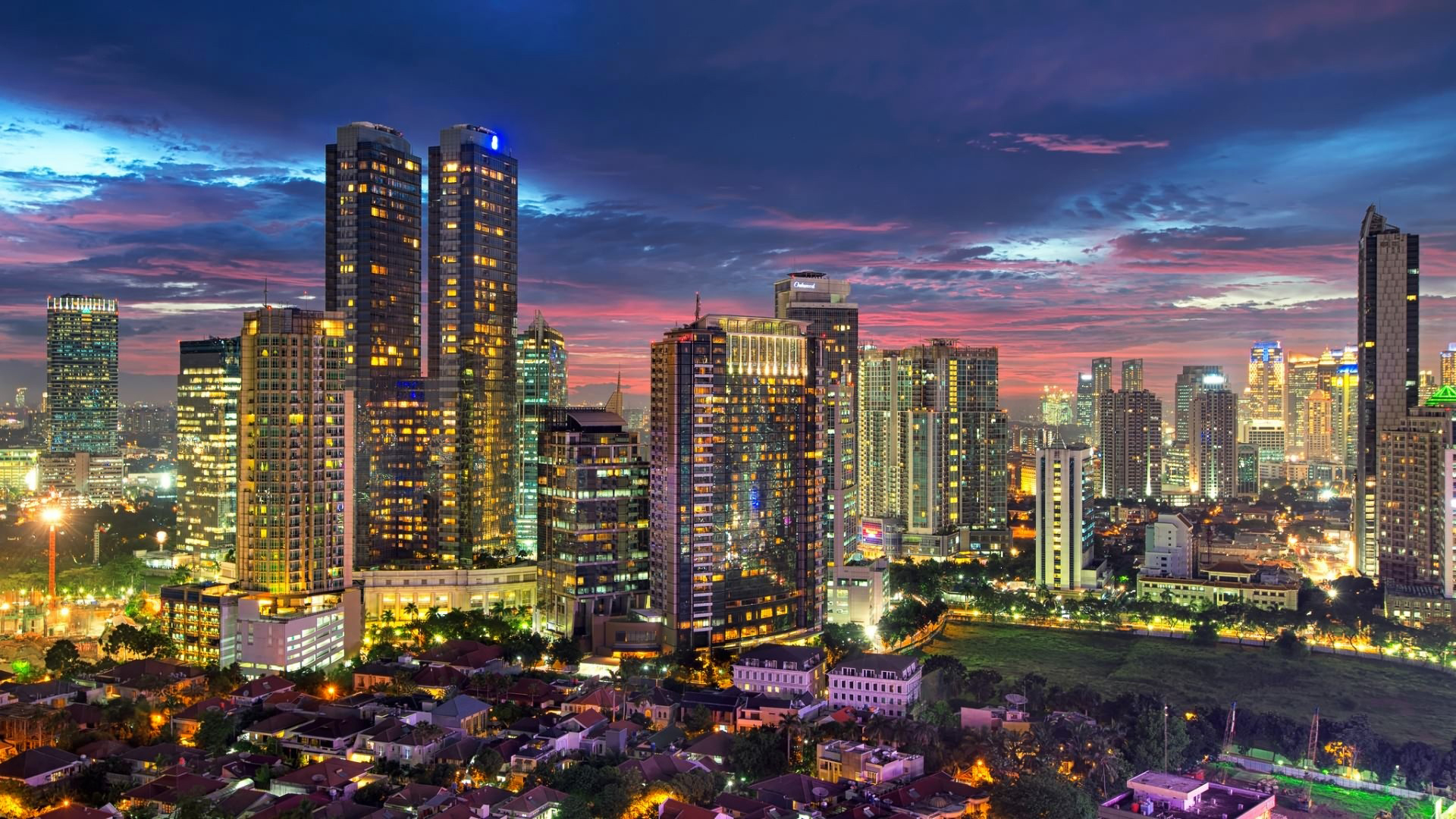
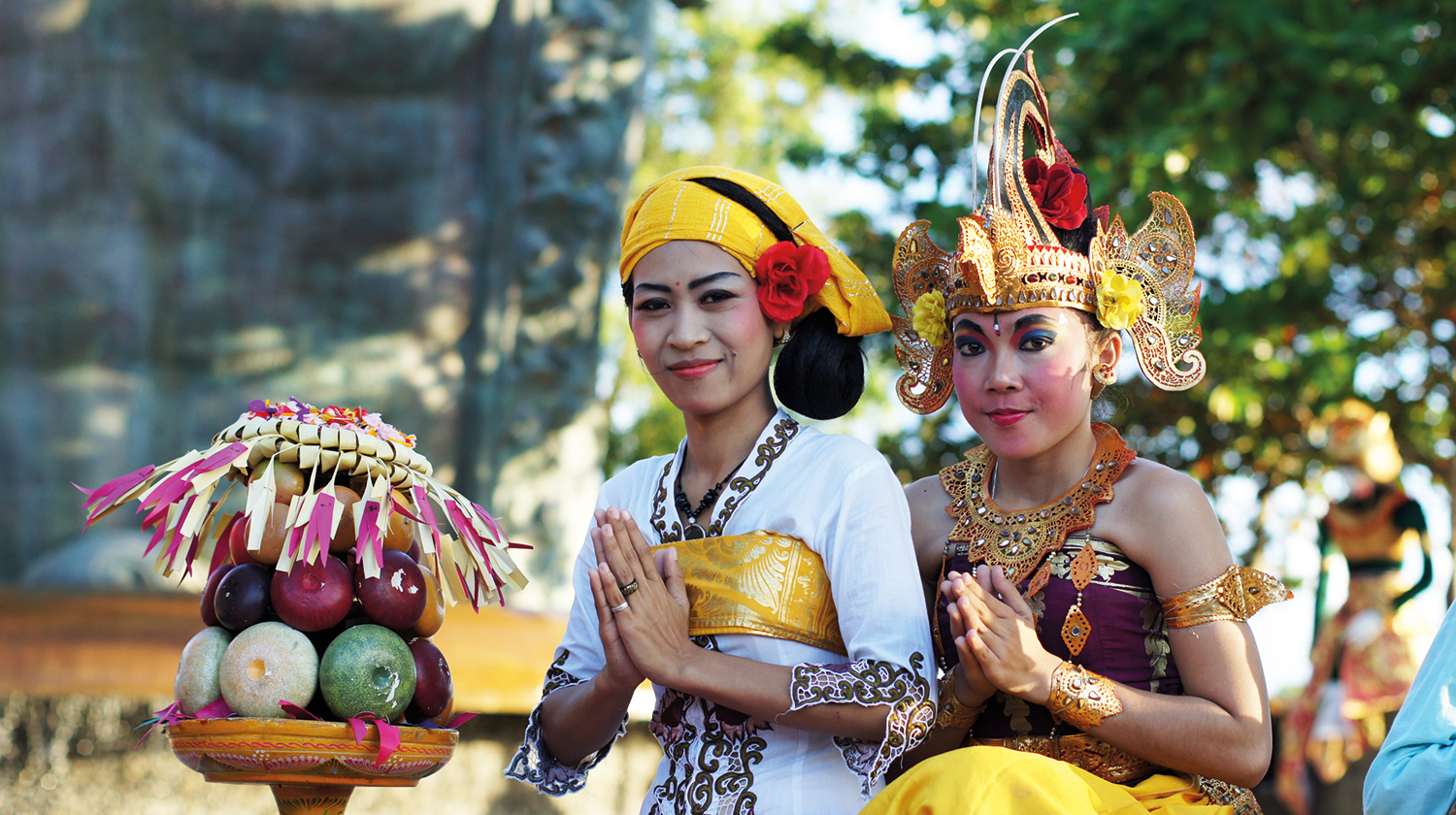
The Warmest Welcome
With so many varied delights on offer, everyone has a different take on what makes Indonesia so wonderful. One thing all visitors can agree on is the warmth of the welcome they receive. Indonesians are famed for their hospitality, humour and laid-back approach to life. With some of the word’s best hotels, locations, activities, sights and sounds, Indonesia awaits with open arms, to welcome you into the rich tapestry that is this diverse island archipelago; a patchwork paradise, adding up to one unbelievable Indonesia.
Festivals and Special Occasions
Most religious holidays are recognized and celebrated in Indonesia, along with celebrations relating to Indonesian culture and history. Celebrations can last for anywhere between a day, a week or even a whole month! This adds up to a calendar that is packed with interesting and exciting events all year round. No matter when you travel to Indonesia, there’s bound to be something going on. Here’s some highlights to build into your travel itinerary:
January
• Gerebeg, Yogyakarta
January kicks off the year in style, with crowds of people in traditional costumes parading alongside colourful floats draped in garlands of flowers to the sound of gamelan music. A wonderful spectacle to introduce visitors to the vibrant diversity of Indonesia. If you missed it the first time around, don’t despair - Gerebeg is held three times a year, in January, April and November.
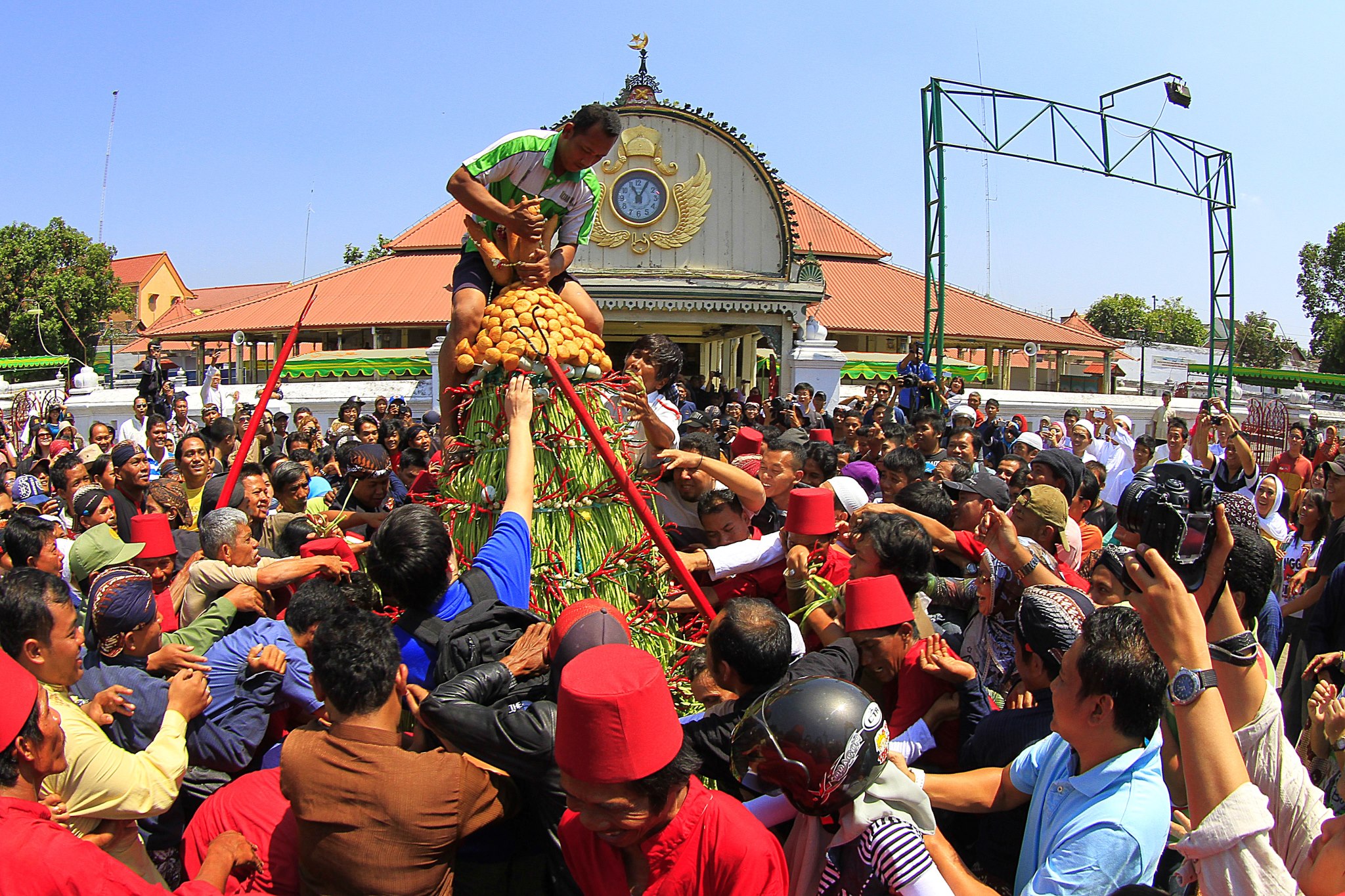
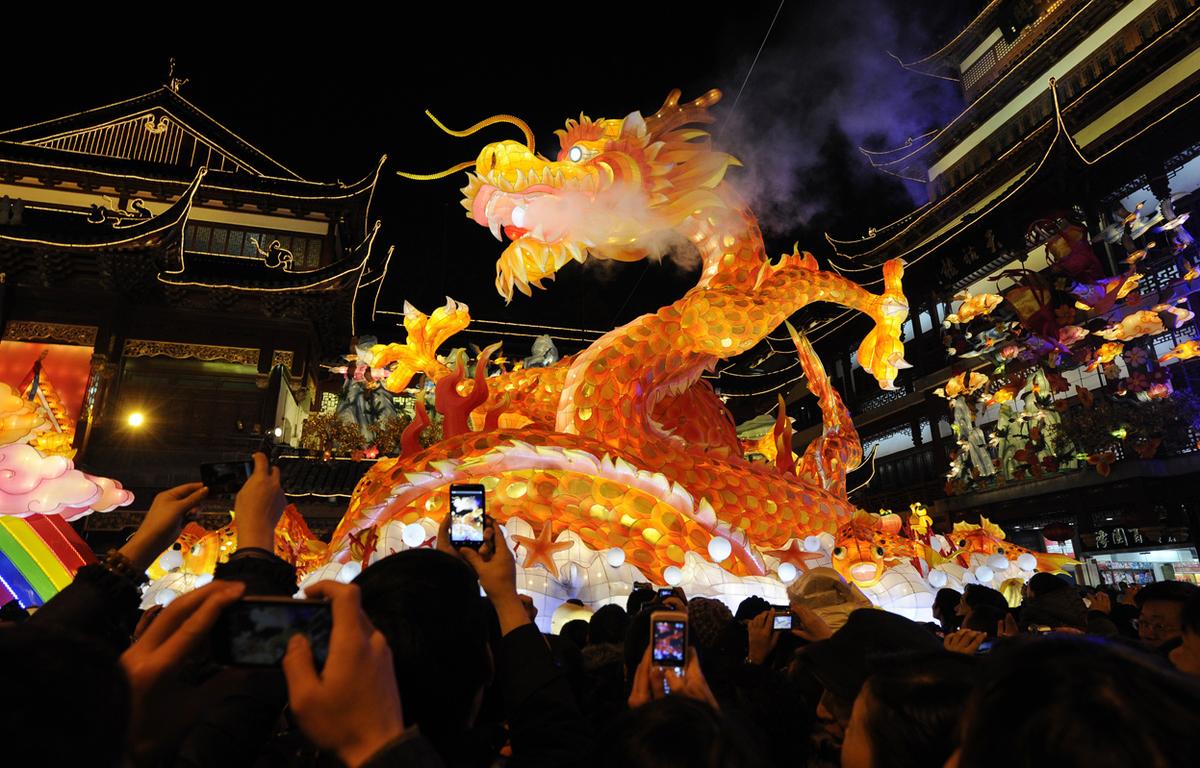
February
• Chinese New Year, 7th February
• Sumba Pasola Festival, February/March
• Nyale, Lombok, February/March
The beginning of the dry season is a great time to visit Indonesia. In addition to more temperate weather, visitors can enjoy the sight of Pasola Festival, an ancient war ritual held in West Sumba, East Nusa Tenggara, involving two groups of horsemen throwing spears at each other. Re-enacted each year, the practice links back to old rituals related to human sacrifice. Elsewhere, on the 19th day of the Sasak calendar (usually February/March), locals gather in their hundreds on the beaches of Kuta in Lombok, light fires and compete in poetry slams called pantun. This is all part of the annual Nyale festival. On the following day, colourful boats packed with boisterous boys and girls embark on the annual harvest for the Nyale fish, considered to be an aphrodisiac and a bellwether for good times in the year ahead.
March
• Bali Spirit Festival
• Nyepi, Bali
• Legu Gam Festival, Ternate
• Java Jazz Music Festival
• Indonesia Fashion Week
• Putrajaya Hot Air Balloons Fiesta
March is bursting with music, theater, fashion and festivities all over Indonesia. The best in international jazz and soul music comes to Jakarta for Java Jazz, whilst Bali plays host to several spiritual celebrations, including Nyepi, when the whole island takes a vow of silence and the order of the day is blissful serenity and contemplation. If extroversion is more to your taste, you can strut your stuff and marvel at the designs on show during Indonesia Fashion Week.
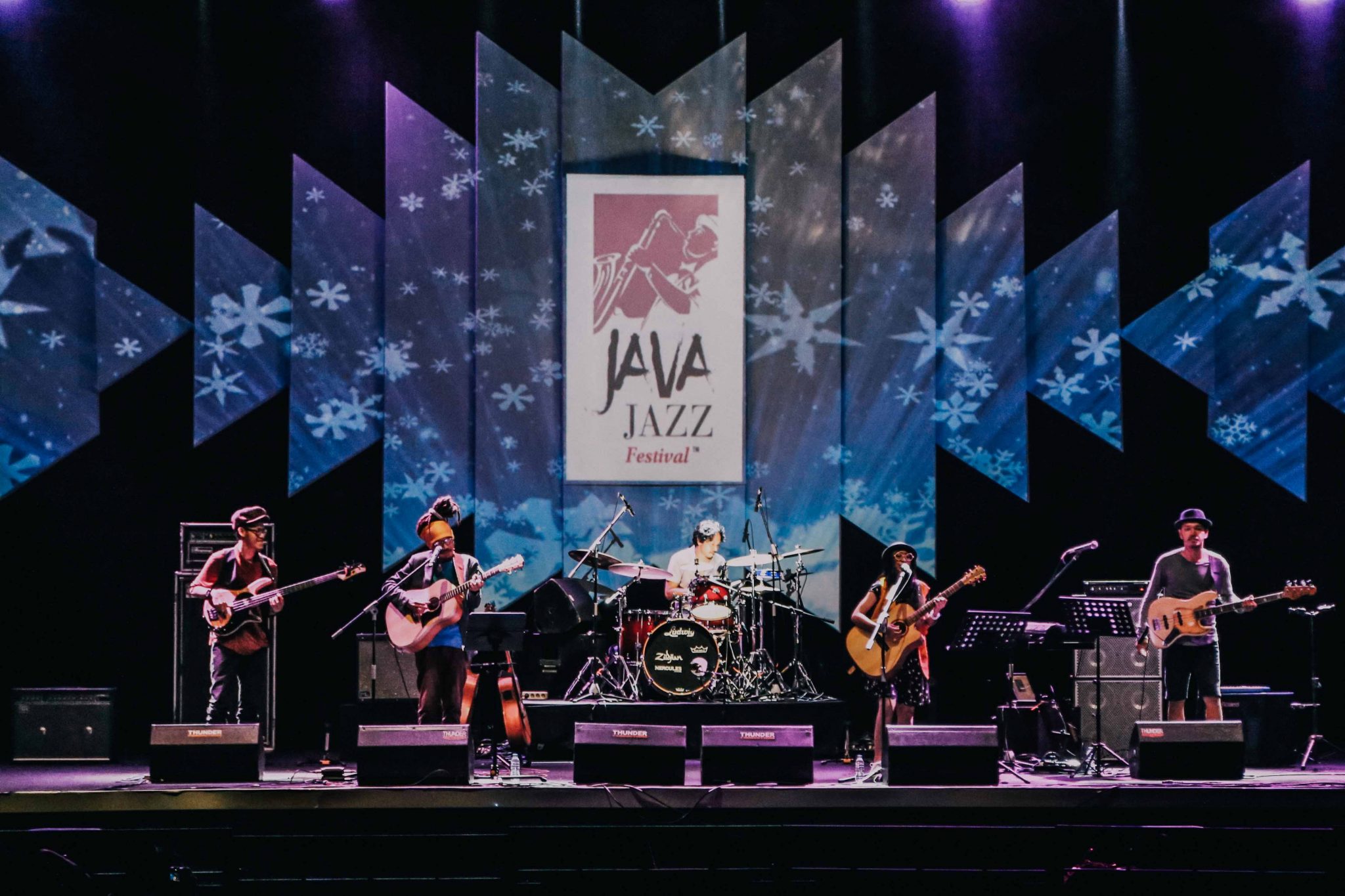
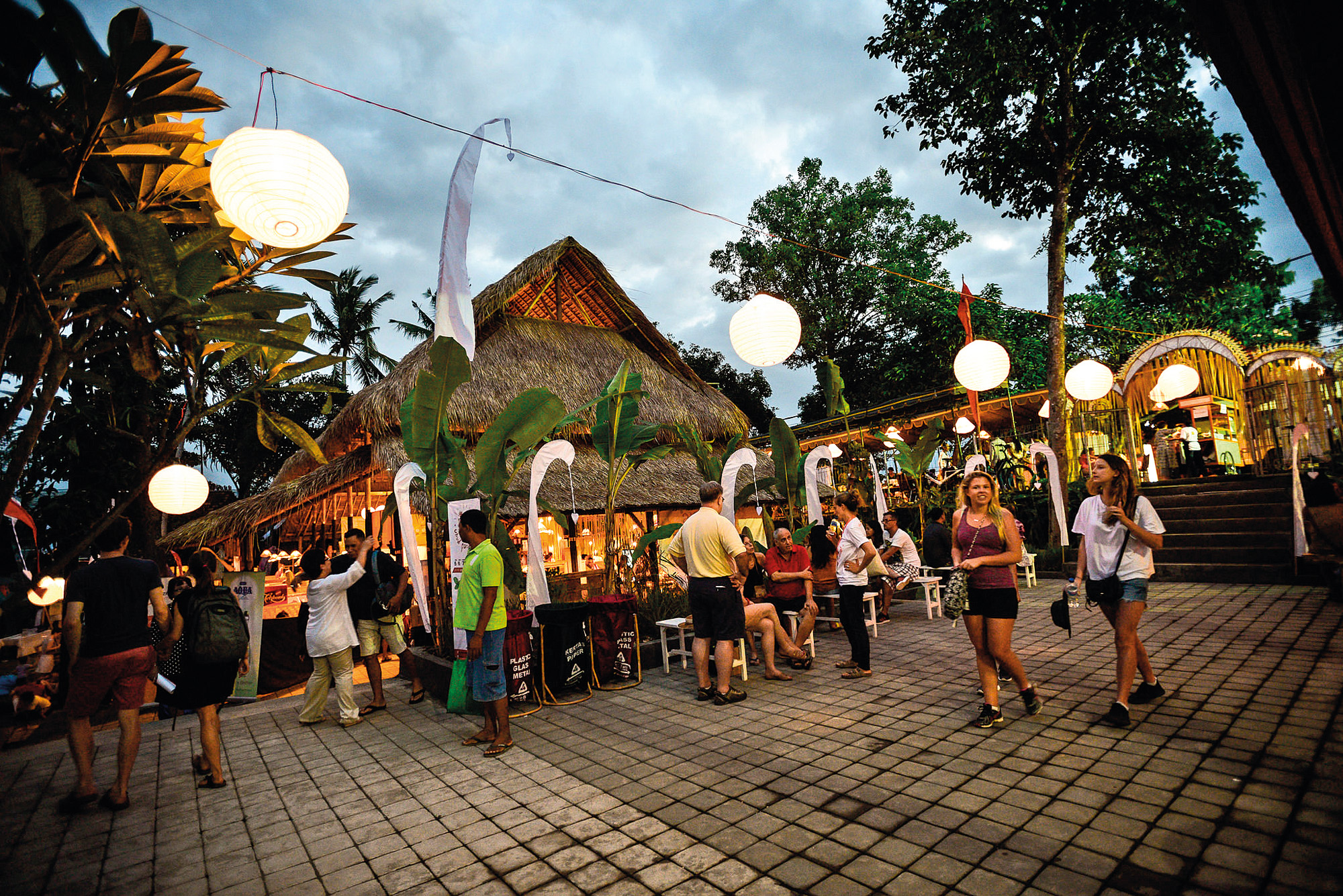
April
• The Archipelago Culinary Festival
In April, The Archipelago Culinary Festival offers a feast of culinary treasures. The festival features some 65 booths representing culinary diversity from 24 of Indonesia’s provinces, each giving a taste of the regions’ distinct and unique flavours. There is a coffee booth that showcases Indonesia’s popular and exclusive coffee varieties, including the world-famous Kopi Luwak. Among the popular traditional culinary dishes are Rendang from West Sumatra, Yogyakarta’s popular Gudeg or jackfruit stew, Ketupat Kandangan from West Sumatra, Jakarta’s favourite snack Kerak Telor, Rabeg Sapi from Banten Province, and a whole lot more. A real treat for foodies and travellers with taste.
May
• International Musi Triboatton Boat Race, Palembang
• Vesak Day (Buddha’s Birthday), 22nd May
• Tour de Flores Bike Race, 18th-23rd May
May is all about body and mind. A good time to blow out the cobwebs and get some exercise (or at least spectate). The International Musi Triboatton Boat Race pitches communities against each other in fierce competition for the fastest and best-decorated boats. A sort of centuries old a roller derby regatta, this is a feast for the eyes. If that doesn’t quite float your boat, why not saddle up for the Tour de Flores, where cyclists and spectators alike will be treated to ten days of spectacular views, folk festivals and community projects on this stunning island. Back in Java, why not visit Borodudur for Vesak day? The oldest Buddhist monument in the world seems like the perfect place to celebrate the birth of Buddha, where devotees gather and the colossal ancient monument stirs into life.
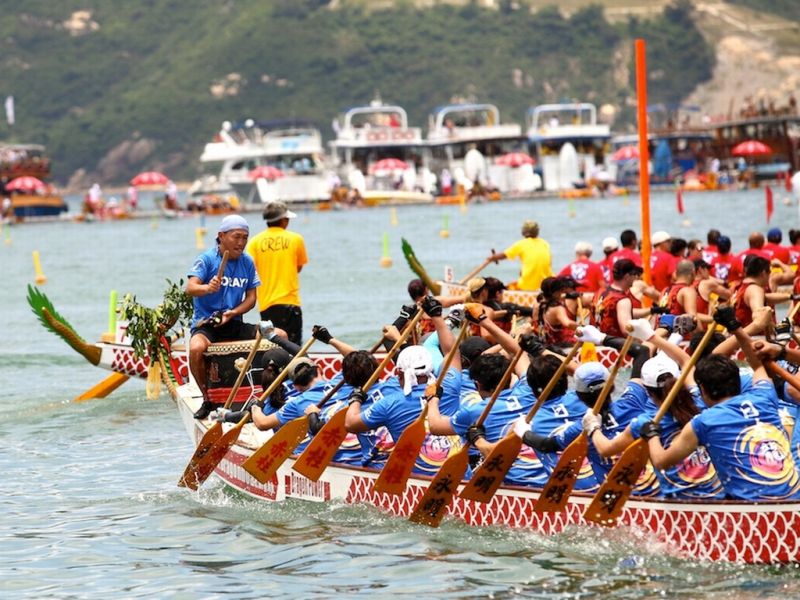
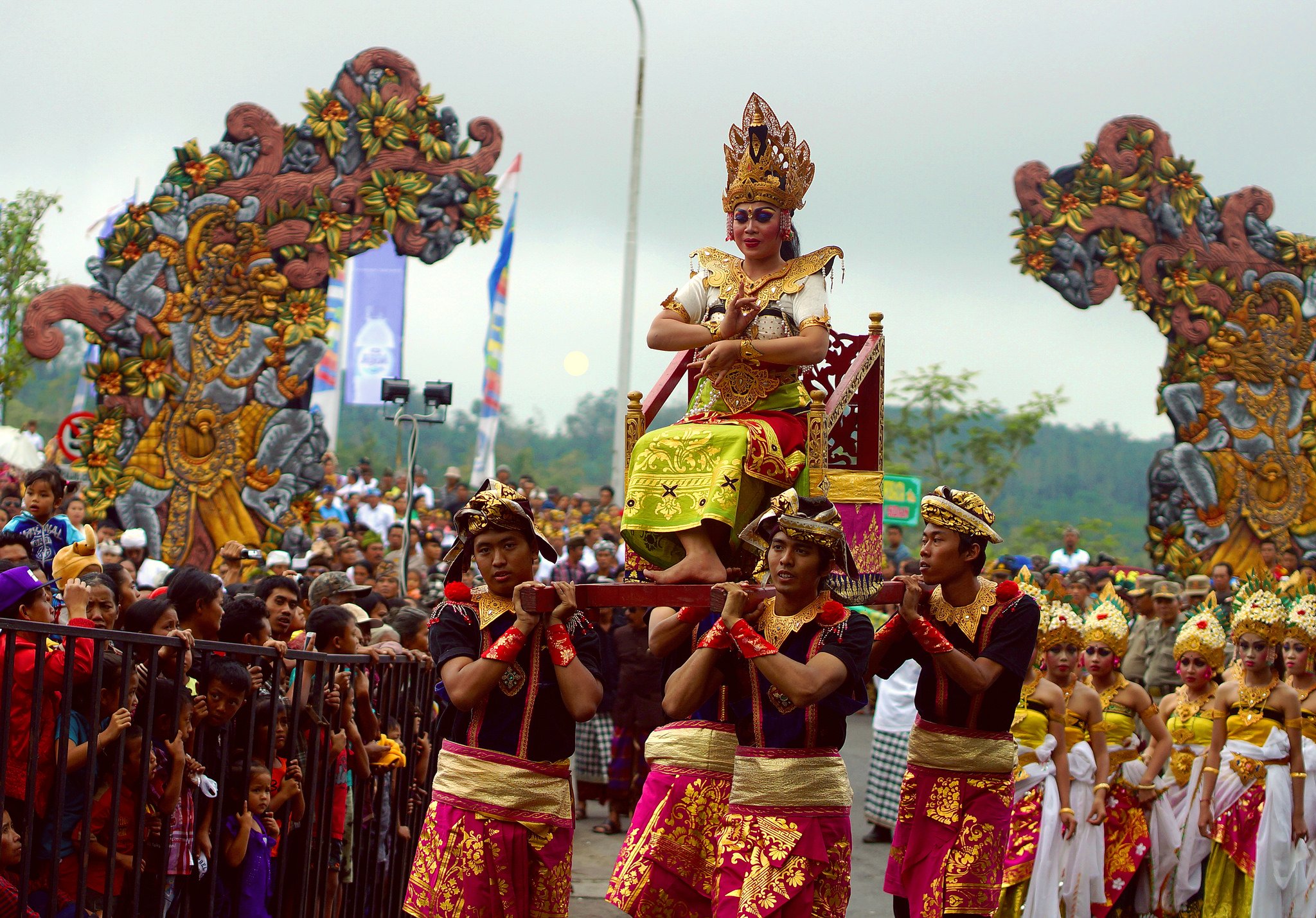
June
• Bali Arts Festival
• Bull Racing Festival in Negara, Bali
• Danau Sentani, Papua
Featuring spectacular traditional dances, tribal crafts, boat races and music, Danau Sentani is a big highlight in the calendar near the northern city of Sentani in Papua. June is also the beginning of peak tourist season for Bali, but there’s plenty going on to keep you off the beaten track.
July
• Idul Fitri (Eid Festival)
• Bali Kite Festival
• Krakatau Festival, Lampung (July-Oct)
• Solo Batik Carnival , 22nd-24th July
• Tana Toraja funeral celebrations
In July, the fasting month of Ramadan comes to an end, along with the working year for most of Indonesia, so roads and resorts fill up fast for one crazy week of congestion as workers flee the cities for their annual holiday. This is a tricky time to travel in Indonesia, as tickets sell out fast and beaches can resemble Jakarta traffic. That being said, if you check your dates in advance you can avoid the crush. There’s still plenty going on in June to help you beat the crowds, and if you can’t beat them, join them! Karakatau is bursting into life in July with outlandish carnival costumes, traditional masks and surfing contests. The country’s best batik designers are out in force in Solo for a fashion carnival, whilst even more colourful creations flutter into the skies above Bali for the Bali Kite Festival.
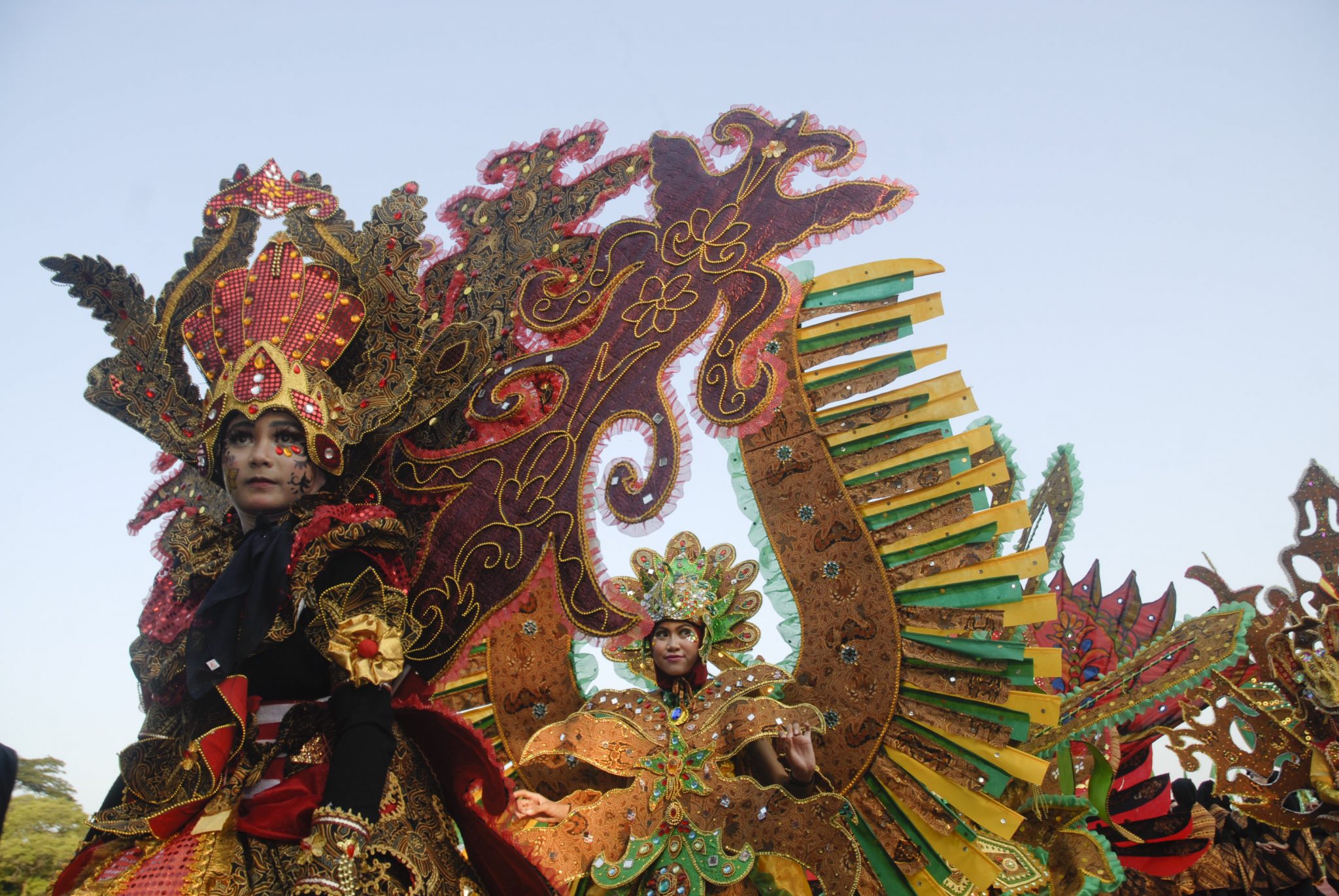
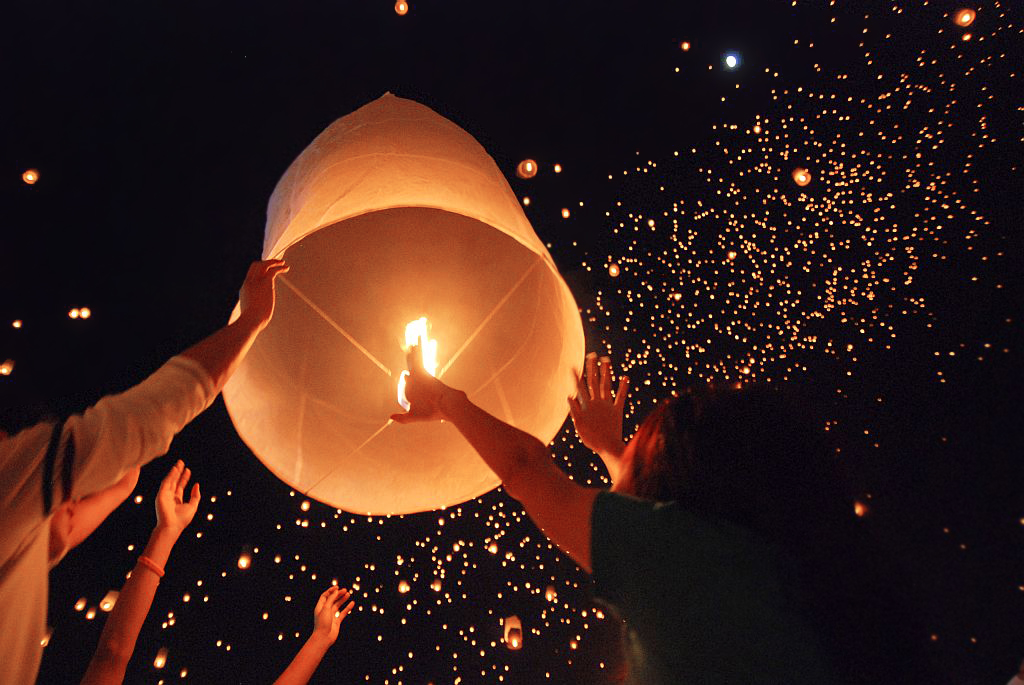
August
• Dieng Culture Festival, 4th-6th August
• Lembah Baliem Festival, 5-9 August 2017
• Tomohon International Flower Festival, Manado, 7th-8th August
• Indonesian Independence Day, 17th August
• Erau International Folk & art Festival, Kalimantan, 22-30 July 2017
Opening the month of August in spectacular fashion, the Dieng Culture Festival in central Java is held annually and presents an eclectic mix of the art and culture from the region. Visitors can witness a traditional Wayung puppet show, along with a fireworks fiesta and hundreds of fire lanterns released into the skies over this community above the clouds. August 17th is a great time to be in Indonesia, as this is the country’s independence day. All over Indonesia, villages and cities will be draped in the country’s colours of red and white, and there are some fantastic games to be seen on streets everywhere to mark the celebrations. Check out Panjat Pinang, in which groups of men pile into human pyramids to clamber up greasy poles for prizes. There’s also kerupuk eating competitions, parades, football matches and Balap Belut, which involves kids racing to pack as many eels into a bottle as they can manage, like a slimy egg and wriggly spoon race. Don’t forget to pack some red and white clothes and get involved!
September
• Idul Adha (Eid al-Adha), 12th September
• Galungan (7th September) & Kuningan (17th September)*
September is a time for spirituality and a feast for the soul. Cows and goats across Indonesia are sacrificed for the Eid al-Adha celebrations, traditionally waving pilgrims off on Haji to Mecca. Galungan is a great time to visit Bali. The gods come down to earth for ten days and the villages and temples become a blur of parades, ceremonies and culinary delights. Colourful bamboo poles called penjor are put up on streets all over Bali, and there’s a limitless supply of tasty local treats. 10 days of indulgence are finished off with the Kuningan festival - a colourful offering to the Hindu god Wisnu involving all the best traditional song and dance Bali has to offer.
*dates for Galungan and Kuningan are determined by the wuku calendar, so are different every year. The above dates are for 2016. Next year they will be held in April and November.
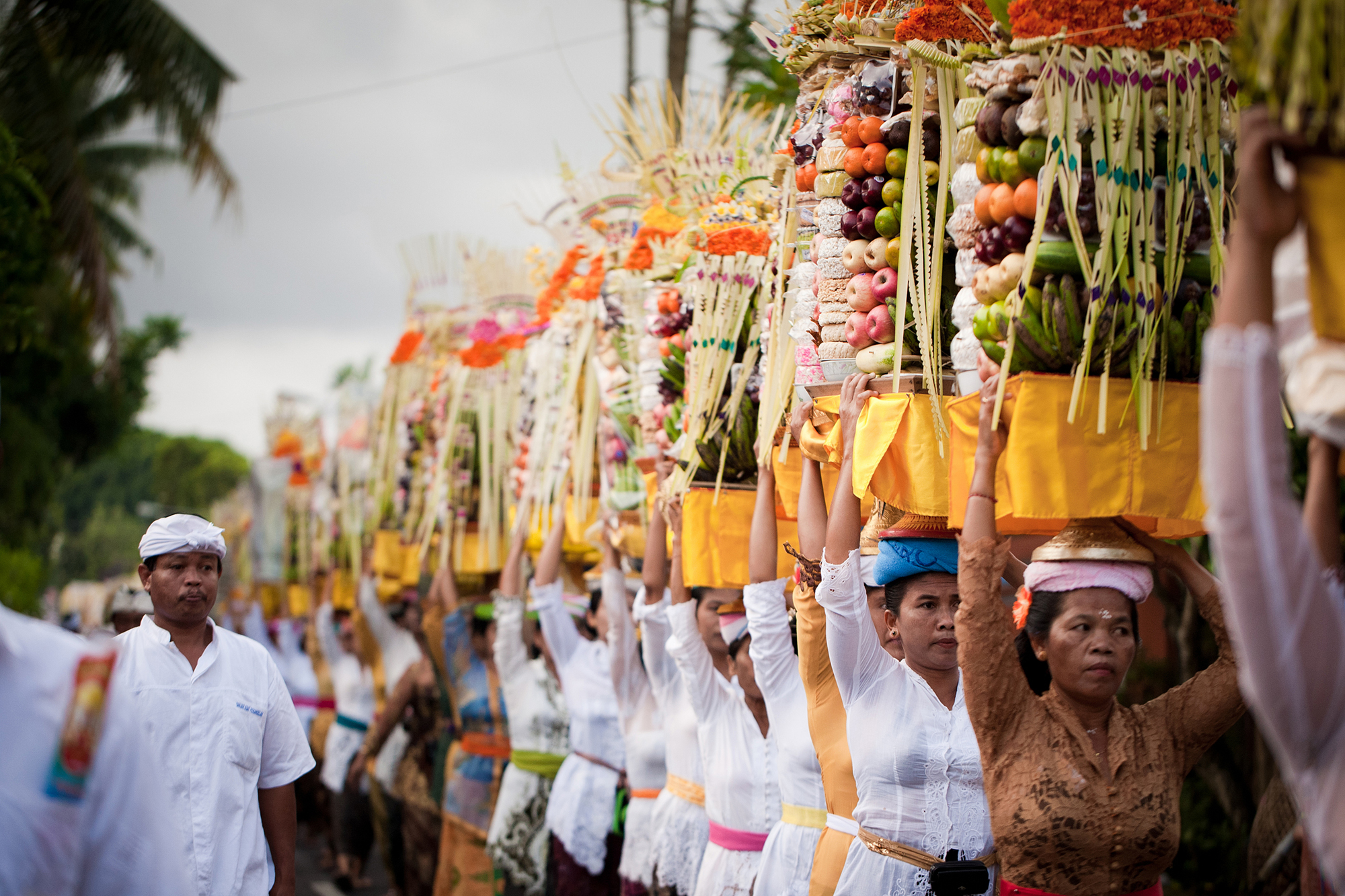
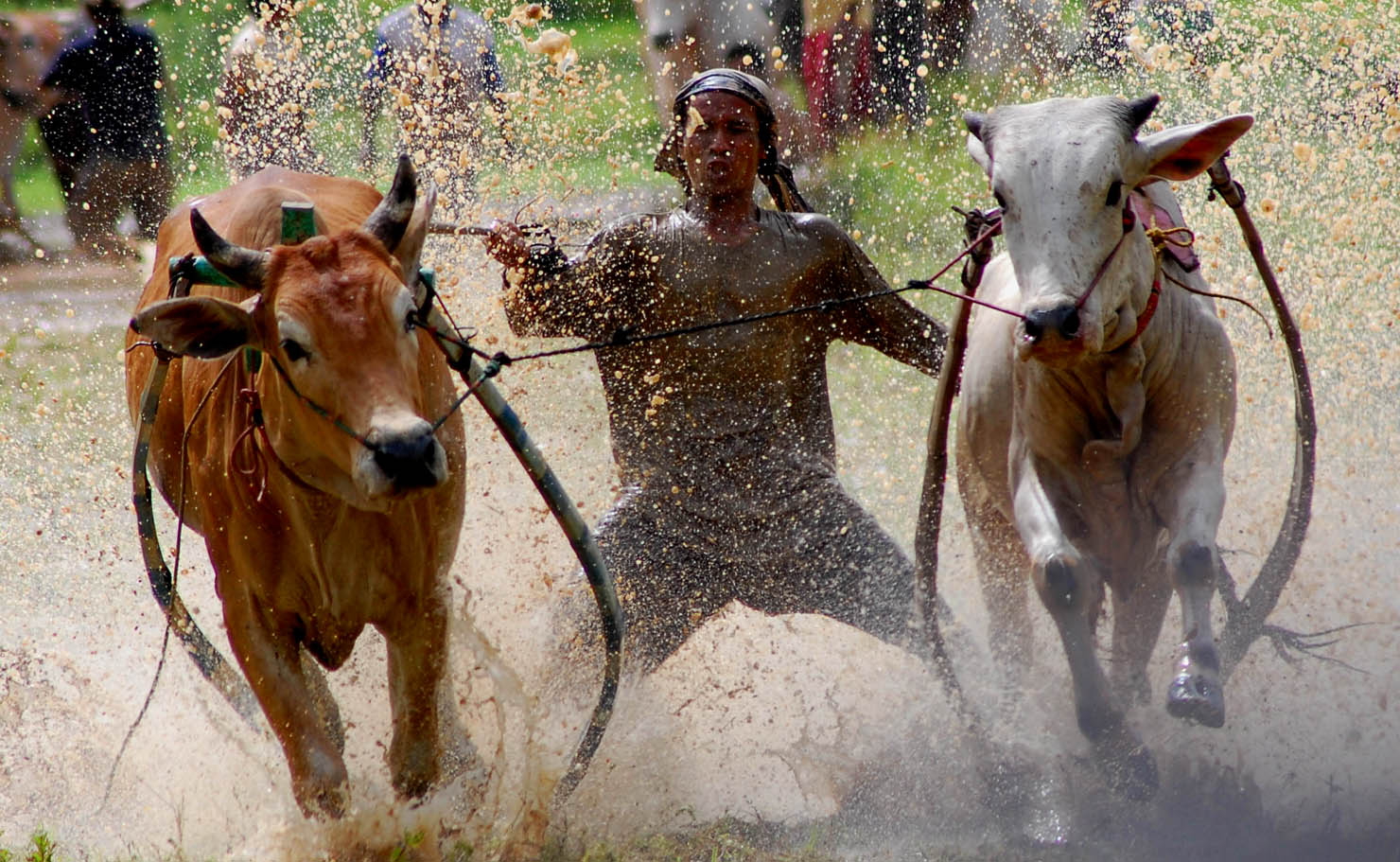
October
• Islamic New Year, 2nd October
• Ubud Readers and Writers Festival, 26th-30th October
• Madura Bull Races
Karapan Sapi is the highlight of the year for residents of Madura, an island just off Java, where islanders prepare all year for this full-throttle bull race. Jockey and bull will hurtle at breakneck speed towards glory and bragging rights, along with enough prize money to make studs and celebrities out of both of them for the rest of the year.
November
• Jakarta International Film Festival
Jakarta International Film Festival (JiFFest) is currently the biggest international film festival in South East Asia. Averaging between 50,000 - 60,000 attendees every year, the festival is held for 10 days every December and showcases the best new talent in emerging Asian cinema. There’s a wide range of workshops, screenings, interviews and awards as the city comes to life and glitters with the light of stars from the silver screen.
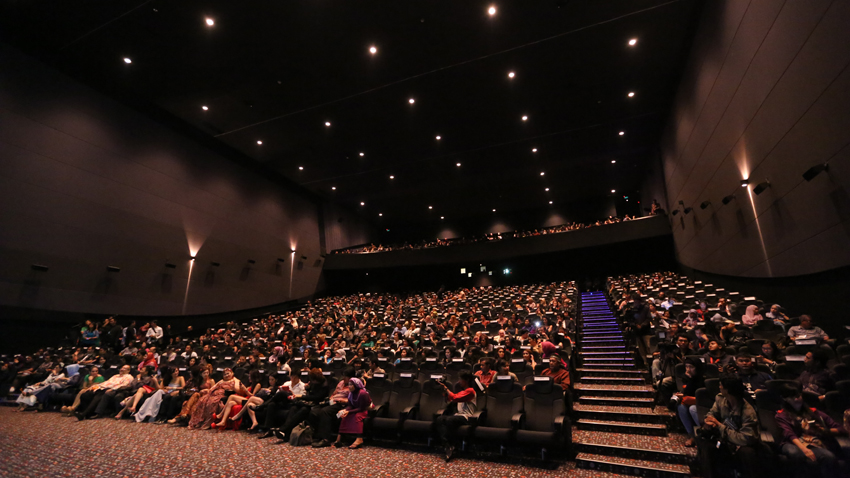
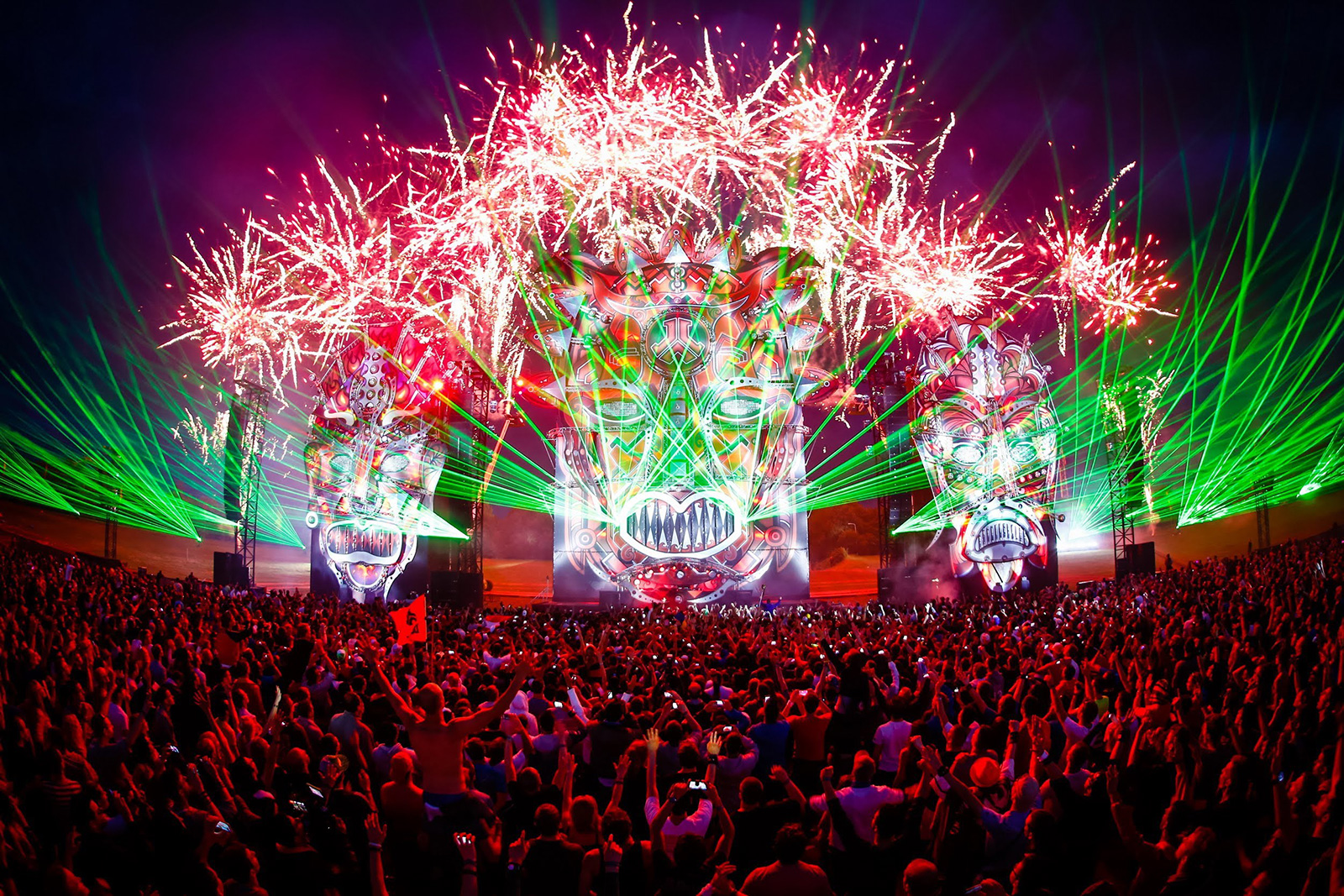
December
• Djakarta Warehouse Project
• Christmas
• New Year’s Eve
Having cemented itself as the largest, most exciting electronic dance music festival in the region over the past 8 years, Indonesia’s Djakarta Warehouse Project will be dropping its beats on the nation’s capital once more from 9th-10th December. Last year’s record-breaking, sold out event welcomed a dazzling array of DJs and electronic acts to the heart of Southeast Asia, and this year’s DWP looks set to raise the bar even higher. The perfect way to finish 2016 with a bang.
Beaches
Picture white sandy vistas fringed by coconut trees, endless emerald ocean views, skies on fire at sunset and hammocks swaying gently on the tropical breeze. Indonesia boasts some of the world’s best beaches. Such an array of islands means you’re never far from the coast, so getting there is easy; it’s the going home that you’ll find difficult, with so many superb dive sites, surf spots, water sports and seaside resorts to choose from, Indonesia is a beach comber’s nirvana. Pick your favourite cocktail, then just sit back and enjoy.

Ring of Fire
Indonesia is a jagged spine of volcanic islands, built into dramatic conical spires by centuries of eruptions and tectonic shifts. The archipelago splits the Indian and Pacific oceans from Thailand in the west, down through the equator and all the way over to Australia and Papua New Guinea in the east. The rich, volcanic soil of the land and the minerals of submarine eruptions make for a superbly fertile environment, giving birth to a tropical explosion of life. Bays, lagoons and coral reefs freckle these emerald oceans with patches of lush vegetation, rocky jungle peaks rising up from the depths and cresting a wave.
Indonesia’s explosive ancestors continue to stand tall and proud – virtually every island has at least one volcano as its centerpiece - some of these rumbling giants remain active to this day. See the sulfur farmers haul their heavy loads up the slopes of Kawah Ijen, hike up to the heavens on Rinjani in Lombok or marvel at the bizarre lake within a crater within a lake within a crater - the miraculous Russian doll of volcanoes to be found only in Indonesia. Mount Bromo is a special sight for travellers; a black molten moonscape in the middle of the Javan jungle, rising up through a silken halo of morning mist; the best way to approach it is still on horseback at dawn. A truly primeval experience.

Underwater Wonderland
Under the waves, lie shipwrecks, shimmering shoals of ocean life, reefs and labyrinths of coral caves. The biodiversity of Indonesia’s oceans is simply beyond compare. All over the archipelago, you can dive, swim and snorkel into an infinity of blue and discover something new with every adventure into the depths. Highlights include turtle conservation in the Derawan islands off North East Kalimantan, whale sharks in the Flores straight, migrating manta rays off the coast of Bali, plus dolphin, dugongs and a congregation of otherworldly beauty in the myriad sapphire coves of Raja Ampat in West Papua. For those with a love of the sea and all its treasures, Indonesia is a living library; a glittering procession of ocean wonders that will leave you speechless.

Traditional Cultures
Indonesia is bursting with artistic traditions, carrying age-old customs through the generations and onto the modern stage. Check out a Wayung puppet show for a timeless story of Javanese mythology, or see the care, flair and craft that goes into a Batak wedding ceremony. Listen to the exquisite and complex symphony of a gamelan orchestra in full flow, or try your hand at Panjat Pinang, when villagers pile themselves up as high as a house to climb a greasy pole for prizes. Only in Indonesia.
Indonesia only became a unified republic in 1945. Before that, the many isolated islands’ only common thread was their value as gardens and storehouses for colonial wealth in the Dutch East Indies. This meant the cultures and idiosyncrasies of these vast and disparate lands have been allowed to remain independent and intact until the modern day. Visitors can still see tribes living as they have done for centuries. From Dayaks in the jungles of Kalimantan, to Barong spirit dances in Balinese temples, pygmy forest dwellers of Papua and traditional animist funeral rights in Toraja; Indonesia remains a rich and startling glimpse into the wonders of the ancient spirit world.

Wonders of the Ancient World
Peppering this chain of paradise islands are ruins, monuments and shrines, evocative and epic reminders of civilizations passed. Borobudur is the word’s largest Buddhist monument – a towering pyramid of stupas, statues and intricate stone sculptures. Nearby Prambanan stands as a testament to a lover’s devotion to his queen, whilst the many palaces, relics and gateways of ancient Java stand as stoic echoes from a bygone civilization.

Colorful Cuisine
Indonesia’s food is as varied as the nation itself. Street sellers known as ‘kaki lima’ cook up a storm on the streets, wafting out wondrous flavours into the night sky and beckoning in a congregation of hungry passers by. Gado-gado is so good they named it twice; spicy peanut sauce with crunchy fresh beansprouts – a veggie street special that always hits the spot. Kitchens throughout the archipelago are represented by culinary treats, such as Baso Malang, Soto Betawi, and Bubur Manado to name but a few.
With a stocked ocean larder on the doorstep, seafood is something of a specialty here. Fish of all shapes and sizes clamour with crustaceans onto dinner plates, bursting with an array of spices, herbs and tangy sauce, enveloped in the delicately smoky flavor of coconut and bamboo from a beach barbeque.
Fancy something unusual? Indonesia always has a surprise up its sleeve, and with food it has a flair for the genuinely unique. Durian is Indonesia’s Marmite. A spiky fruit with an explosion on flavours hidden beneath its prickly tendrils, you either love it, or simply want to throw it out of the window and run. Banned on public transport and prone to fermenting into a drunken goo if left in a fridge, this extraordinary fruit divides opinion and defies definition. Its taste has been described as a mixture of aromatic, bitter, sweet and savory all rolled into one, combining creamy custard undertones with a butter-like consistency and hints of garlic. Its smell has also been likened to an open sewer mingling with a gas leek in an abattoir. Not for the feint of stomach, but an absolute must for adventurous culinary globetrotters. Are you a lover or a hater of this controversial fruit? You’ll never know until you try!
High on the culinary bucket list should be Nasi Padang – a style of cooking haling from its namesake hometown in West Sumatra, blending delicious meats, seafood, vegetables and spices marinated in sumptuous sauces of coconut, chili and herbs; this ubiquitous cookery is so popular, it’s spread to virtually every corner of the nation. Try the Sapi Rendang and you may decide to stay forever. With so many tastes on the table, you’ll need to come back to Indonesia again for second helpings.

Batik
Batik is the distinctive, intricately patterned fabric that ties so many of Indonesia’s cultures together. You’ll see it everywhere in the archipelago, from the spinning wheels of hill tribe huts, to the markets of Jogja and the catwalks of Jakarta; each island tribe has its own style. Each garment is different, but all are unmistakably Indonesia. Visitors can learn to make their own designs using age-old traditional methods, or can simply peruse and admire the constellation of colours and pick their faves from the firmament.

Wildlife of the Wallace Line
In the 19th century, an English entomologist, botanist and traveller named Alfred Russell Wallace spent a decade collecting, cataloguing and marveling at the flora and fauna of what was then the Malay Archipelago. He discovered a land that is uncommonly rich in biodiversity, and also noticed a distinct line through the tropics which separates Asian and Australian ecology. That borderline is known to this day as The Wallace Line. Most of the treasures he uncovered are still around today, waiting to be rediscovered by modern travellers. Indonesia is home to orangutan, komodo dragons, birds of paradise, the Sumatran tiger and the Javanese Rhino. And that’s just on the land. Venturing out into the open oceans opens up a whole universe of dazzling corals and a uniquely varied proliferation of marine life. For nature lovers, there’s nowhere that packs as much beauty and biodiversity as Indonesia.

Stunning Cityscapes
If the concrete jungle is more to your tastes, Indonesia boasts some bustling metropolises that embody the vibrant and electric pulse of a nation on the move. You can rub shoulders with international DJs in the many bars and clubs of Jakarta, where a pulsating nightlife will swallow you whole, or mingle with artisans and designers in the boutiques and workshops of Yogyakarta. Development has come to Indonesia, and it’s brought with it a superb range of shopping, dining and nightlife to rival any major city in the world.

The Warmest Welcome
With so many varied delights on offer, everyone has a different take on what makes Indonesia so wonderful. One thing all visitors can agree on is the warmth of the welcome they receive. Indonesians are famed for their hospitality, humour and laid-back approach to life. With some of the word’s best hotels, locations, activities, sights and sounds, Indonesia awaits with open arms, to welcome you into the rich tapestry that is this diverse island archipelago; a patchwork paradise, adding up to one unbelievable Indonesia.

Festivals and Special Occasions
Most religious holidays are recognized and celebrated in Indonesia, along with celebrations relating to Indonesian culture and history. Celebrations can last for anywhere between a day, a week or even a whole month! This adds up to a calendar that is packed with interesting and exciting events all year round. No matter when you travel to Indonesia, there’s bound to be something going on. Here’s some highlights to build into your travel itinerary:
January
• Gerebeg, Yogyakarta
January kicks off the year in style, with crowds of people in traditional costumes parading alongside colourful floats draped in garlands of flowers to the sound of gamelan music. A wonderful spectacle to introduce visitors to the vibrant diversity of Indonesia. If you missed it the first time around, don’t despair - Gerebeg is held three times a year, in January, April and November.

February
• Chinese New Year, 7th February
• Sumba Pasola Festival, February/March
• Nyale, Lombok, February/March
The beginning of the dry season is a great time to visit Indonesia. In addition to more temperate weather, visitors can enjoy the sight of Pasola Festival, an ancient war ritual held in West Sumba, East Nusa Tenggara, involving two groups of horsemen throwing spears at each other. Re-enacted each year, the practice links back to old rituals related to human sacrifice. Elsewhere, on the 19th day of the Sasak calendar (usually February/March), locals gather in their hundreds on the beaches of Kuta in Lombok, light fires and compete in poetry slams called pantun. This is all part of the annual Nyale festival. On the following day, colourful boats packed with boisterous boys and girls embark on the annual harvest for the Nyale fish, considered to be an aphrodisiac and a bellwether for good times in the year ahead.

March
• Bali Spirit Festival
• Nyepi, Bali
• Legu Gam Festival, Ternate
• Java Jazz Music Festival
• Indonesia Fashion Week
• Putrajaya Hot Air Balloons Fiesta
March is bursting with music, theater, fashion and festivities all over Indonesia. The best in international jazz and soul music comes to Jakarta for Java Jazz, whilst Bali plays host to several spiritual celebrations, including Nyepi, when the whole island takes a vow of silence and the order of the day is blissful serenity and contemplation. If extroversion is more to your taste, you can strut your stuff and marvel at the designs on show during Indonesia Fashion Week.

April
• The Archipelago Culinary Festival
In April, The Archipelago Culinary Festival offers a feast of culinary treasures. The festival features some 65 booths representing culinary diversity from 24 of Indonesia’s provinces, each giving a taste of the regions’ distinct and unique flavours. There is a coffee booth that showcases Indonesia’s popular and exclusive coffee varieties, including the world-famous Kopi Luwak. Among the popular traditional culinary dishes are Rendang from West Sumatra, Yogyakarta’s popular Gudeg or jackfruit stew, Ketupat Kandangan from West Sumatra, Jakarta’s favourite snack Kerak Telor, Rabeg Sapi from Banten Province, and a whole lot more. A real treat for foodies and travellers with taste.

May
• International Musi Triboatton Boat Race, Palembang
• Vesak Day (Buddha’s Birthday), 22nd May
• Tour de Flores Bike Race, 18th-23rd May
May is all about body and mind. A good time to blow out the cobwebs and get some exercise (or at least spectate). The International Musi Triboatton Boat Race pitches communities against each other in fierce competition for the fastest and best-decorated boats. A sort of centuries old a roller derby regatta, this is a feast for the eyes. If that doesn’t quite float your boat, why not saddle up for the Tour de Flores, where cyclists and spectators alike will be treated to ten days of spectacular views, folk festivals and community projects on this stunning island. Back in Java, why not visit Borodudur for Vesak day? The oldest Buddhist monument in the world seems like the perfect place to celebrate the birth of Buddha, where devotees gather and the colossal ancient monument stirs into life.

June
• Bali Arts Festival
• Bull Racing Festival in Negara, Bali
• Danau Sentani, Papua
Featuring spectacular traditional dances, tribal crafts, boat races and music, Danau Sentani is a big highlight in the calendar near the northern city of Sentani in Papua. June is also the beginning of peak tourist season for Bali, but there’s plenty going on to keep you off the beaten track.

July
• Idul Fitri (Eid Festival)
• Bali Kite Festival
• Krakatau Festival, Lampung (July-Oct)
• Solo Batik Carnival , 22nd-24th July
• Tana Toraja funeral celebrations
In July, the fasting month of Ramadan comes to an end, along with the working year for most of Indonesia, so roads and resorts fill up fast for one crazy week of congestion as workers flee the cities for their annual holiday. This is a tricky time to travel in Indonesia, as tickets sell out fast and beaches can resemble Jakarta traffic. That being said, if you check your dates in advance you can avoid the crush. There’s still plenty going on in June to help you beat the crowds, and if you can’t beat them, join them! Karakatau is bursting into life in July with outlandish carnival costumes, traditional masks and surfing contests. The country’s best batik designers are out in force in Solo for a fashion carnival, whilst even more colourful creations flutter into the skies above Bali for the Bali Kite Festival.

August
• Dieng Culture Festival, 4-6 August 2017
• Lembah Baliem Festival, 5-9 August 2017
• Tomohon International Flower Festival, Manado, 7th-8th August
• Indonesian Independence Day, 17th August
• Erau International Folk & art Festival, Kalimantan, 22 - 30 July 2017
Opening the month of August in spectacular fashion, the Dieng Culture Festival in central Java is held annually and presents an eclectic mix of the art and culture from the region. Visitors can witness a traditional Wayung puppet show, along with a fireworks fiesta and hundreds of fire lanterns released into the skies over this community above the clouds. August 17th is a great time to be in Indonesia, as this is the country’s independence day. All over Indonesia, villages and cities will be draped in the country’s colours of red and white, and there are some fantastic games to be seen on streets everywhere to mark the celebrations. Check out Panjat Pinang, in which groups of men pile into human pyramids to clamber up greasy poles for prizes. There’s also kerupuk eating competitions, parades, football matches and Balap Belut, which involves kids racing to pack as many eels into a bottle as they can manage, like a slimy egg and wriggly spoon race. Don’t forget to pack some red and white clothes and get involved!

September
• Idul Adha (Eid al-Adha), 12th September
• Galungan (7th September) & Kuningan (17th September)*
September is a time for spirituality and a feast for the soul. Cows and goats across Indonesia are sacrificed for the Eid al-Adha celebrations, traditionally waving pilgrims off on Haji to Mecca. Galungan is a great time to visit Bali. The gods come down to earth for ten days and the villages and temples become a blur of parades, ceremonies and culinary delights. Colourful bamboo poles called penjor are put up on streets all over Bali, and there’s a limitless supply of tasty local treats. 10 days of indulgence are finished off with the Kuningan festival - a colourful offering to the Hindu god Wisnu involving all the best traditional song and dance Bali has to offer.
*dates for Galungan and Kuningan are determined by the wuku calendar, so are different every year. The above dates are for 2016. Next year they will be held in April and November.

October
• Islamic New Year, 2nd October
• Ubud Readers and Writers Festival, 26th-30th October
• Madura Bull Races
Karapan Sapi is the highlight of the year for residents of Madura, an island just off Java, where islanders prepare all year for this full-throttle bull race. Jockey and bull will hurtle at breakneck speed towards glory and bragging rights, along with enough prize money to make studs and celebrities out of both of them for the rest of the year.

November
• Jakarta International Film Festival
Jakarta International Film Festival (JiFFest) is currently the biggest international film festival in South East Asia. Averaging between 50,000 - 60,000 attendees every year, the festival is held for 10 days every December and showcases the best new talent in emerging Asian cinema. There’s a wide range of workshops, screenings, interviews and awards as the city comes to life and glitters with the light of stars from the silver screen.

December
• Djakarta Warehouse Project
• Christmas
• New Year’s Eve
Having cemented itself as the largest, most exciting electronic dance music festival in the region over the past 8 years, Indonesia’s Djakarta Warehouse Project will be dropping its beats on the nation’s capital once more from 9th-10th December. Last year’s record-breaking, sold out event welcomed a dazzling array of DJs and electronic acts to the heart of Southeast Asia, and this year’s DWP looks set to raise the bar even higher. The perfect way to finish 2016 with a bang.


